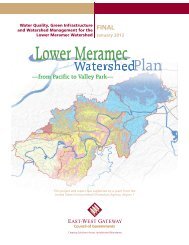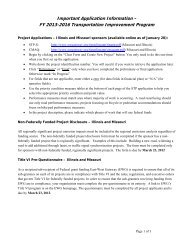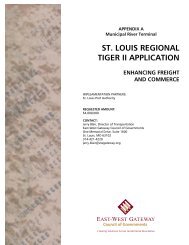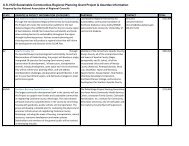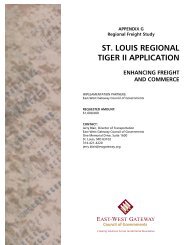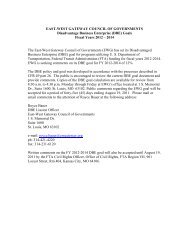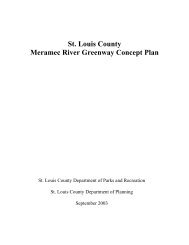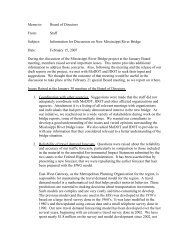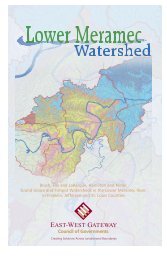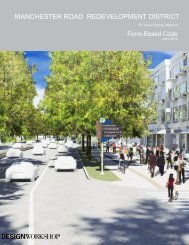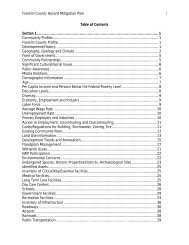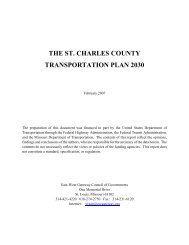Jefferson County - East-West Gateway Coordinating Council
Jefferson County - East-West Gateway Coordinating Council
Jefferson County - East-West Gateway Coordinating Council
You also want an ePaper? Increase the reach of your titles
YUMPU automatically turns print PDFs into web optimized ePapers that Google loves.
90<br />
<strong>Jefferson</strong> <strong>County</strong> – Section 2<br />
conditioning, architectural design, and improved accuracy in weather forecasting), heat<br />
waves continue to take many lives. From the early 20th century to the present time,<br />
Americans have experienced a significant rise in the cost of property damage from severe<br />
weather events, while at the same time the number of lives lost has decreased.<br />
Unfortunately, it appears that heat waves have not followed the same trend.<br />
Like all other major weather events, we cannot prevent a heat wave from developing. We<br />
should, however, give serious consideration to how our communities deal with heat waves<br />
when they occur. In addition, there are a number of other reasons why we should care<br />
about how we deal with heat waves. First, it is often the case that many fatalities during<br />
even the most severe heat waves occur after the first day of extreme heat. This means that<br />
there is time to help people who do not have, or cannot afford, air conditioning. People in<br />
the U. S. over 65 years old are especially vulnerable to extreme heat, and this population is<br />
expected to grow in the very near future.<br />
Heat waves of the past have often been more intense in urban areas. This is a real problem<br />
because Americans are continuously migrating to urban areas. This trend suggests that<br />
more people would be at risk when a heat wave occurs in the region, power companies<br />
would be heavily stressed trying to keep more people cool, and "urban heat islands" (urban<br />
areas where heat is retained by a high density of man-made structures) would be created,<br />
or enhanced if they already existed in the region.<br />
Scientists have observed that the average global temperature increased by the end of the<br />
20th century. As global warming continues it could increase the probability of more<br />
frequent and more intense heat waves. This poses an even greater problem for northern<br />
cities in the U.S., where people are not accustomed to long periods of high heat. Finally,<br />
there are a few other societal impacts to be considered such as: water usage (heat waves<br />
often occur during droughts), urban pollution building up during heat waves, and the<br />
economic impact of keeping millions of people cool.<br />
This paper will focus on past heat waves that recently occurred (within the past 6 years)<br />
impacting U. S. cities in the Midwest and the Northeast. The first topic that will be assessed<br />
is how were certain cities in the Midwest and the Northeast impacted by severe heat<br />
waves. Next, the paper will examine how different cities dealt with heat waves in order to<br />
reduce the health impacts to the population. The development of heat warning systems or<br />
upgrading existing heat warning systems will be examined in order to determine the<br />
effectiveness of the systems in saving people's lives. Finally, this study will attempt to<br />
provide more ideas that could help reduce the impacts of heat waves in the cities of the<br />
Midwest, the Northeast, and could possibly be applied to other cities across the U.S.<br />
Social conditions are major players in the hazards posed by heat waves. People most<br />
affected by heat waves are the elderly who live alone in poor, high crime neighborhoods in<br />
the city. These people often keep their windows closed to prevent break-ins and they often<br />
cannot leave to go to a cooling center.



